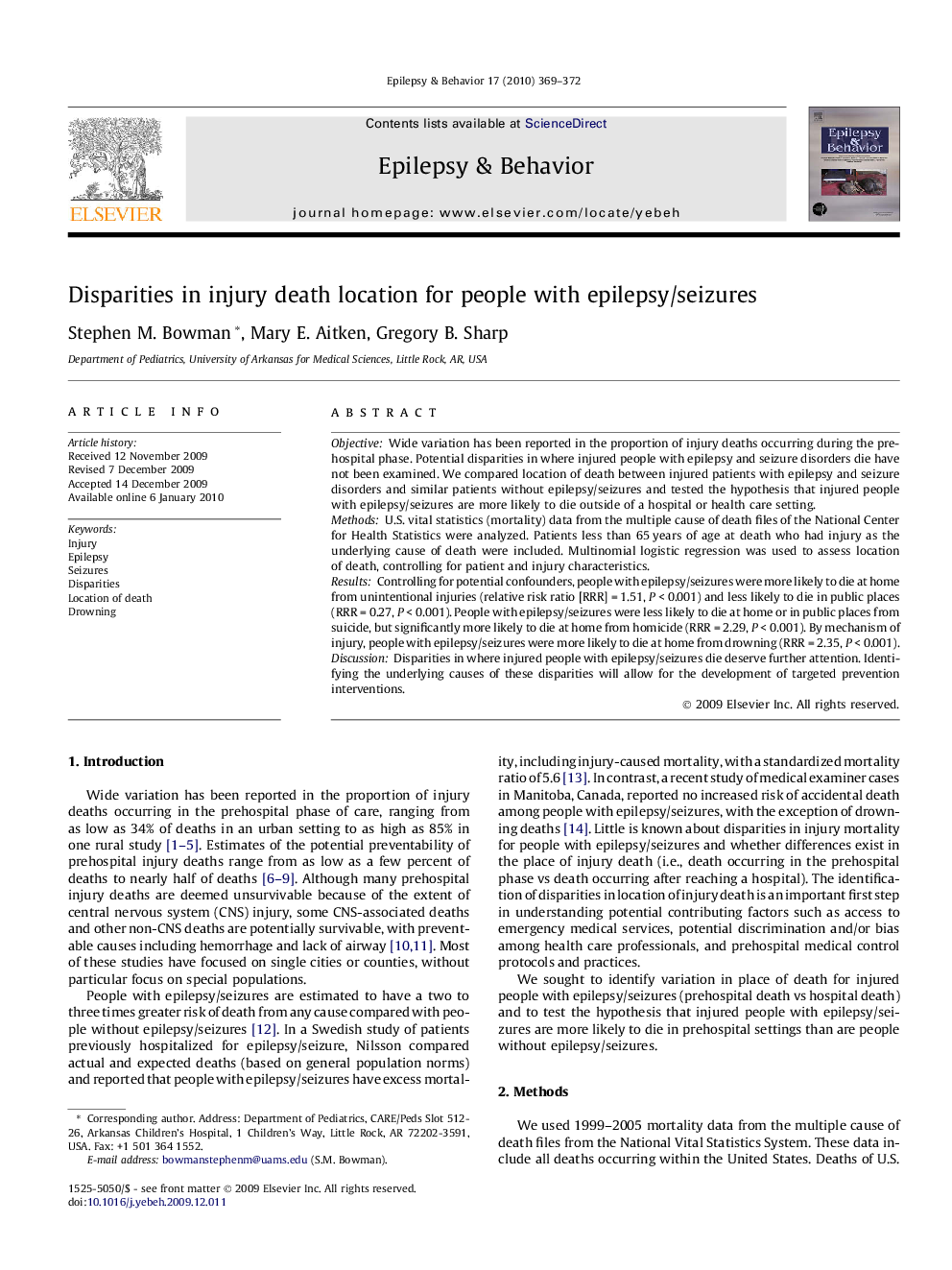| کد مقاله | کد نشریه | سال انتشار | مقاله انگلیسی | نسخه تمام متن |
|---|---|---|---|---|
| 3050602 | 1185957 | 2010 | 4 صفحه PDF | دانلود رایگان |

ObjectiveWide variation has been reported in the proportion of injury deaths occurring during the prehospital phase. Potential disparities in where injured people with epilepsy and seizure disorders die have not been examined. We compared location of death between injured patients with epilepsy and seizure disorders and similar patients without epilepsy/seizures and tested the hypothesis that injured people with epilepsy/seizures are more likely to die outside of a hospital or health care setting.MethodsU.S. vital statistics (mortality) data from the multiple cause of death files of the National Center for Health Statistics were analyzed. Patients less than 65 years of age at death who had injury as the underlying cause of death were included. Multinomial logistic regression was used to assess location of death, controlling for patient and injury characteristics.ResultsControlling for potential confounders, people with epilepsy/seizures were more likely to die at home from unintentional injuries (relative risk ratio [RRR] = 1.51, P < 0.001) and less likely to die in public places (RRR = 0.27, P < 0.001). People with epilepsy/seizures were less likely to die at home or in public places from suicide, but significantly more likely to die at home from homicide (RRR = 2.29, P < 0.001). By mechanism of injury, people with epilepsy/seizures were more likely to die at home from drowning (RRR = 2.35, P < 0.001).DiscussionDisparities in where injured people with epilepsy/seizures die deserve further attention. Identifying the underlying causes of these disparities will allow for the development of targeted prevention interventions.
Journal: Epilepsy & Behavior - Volume 17, Issue 3, March 2010, Pages 369–372